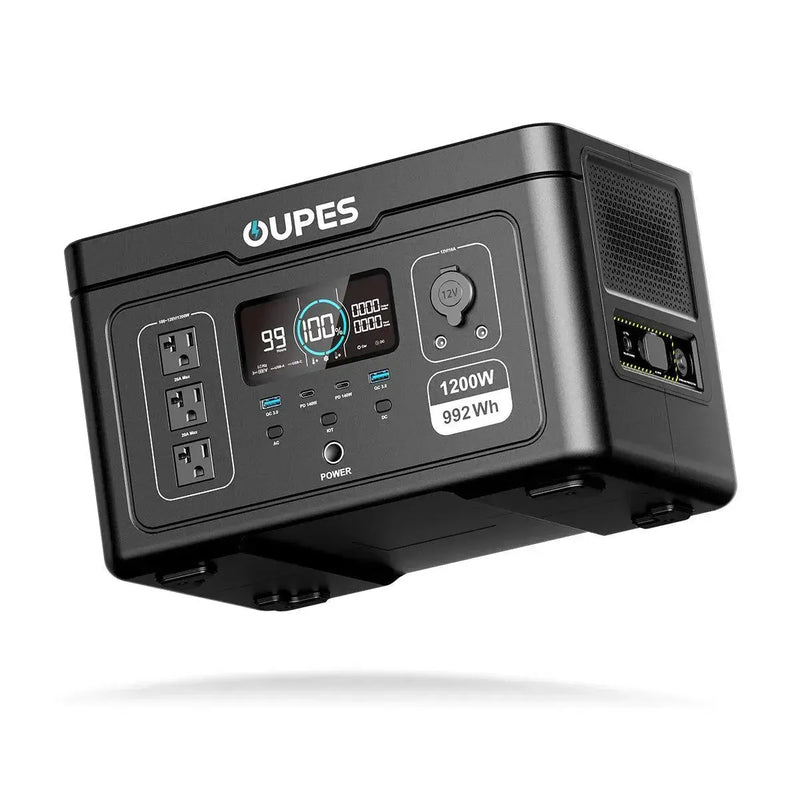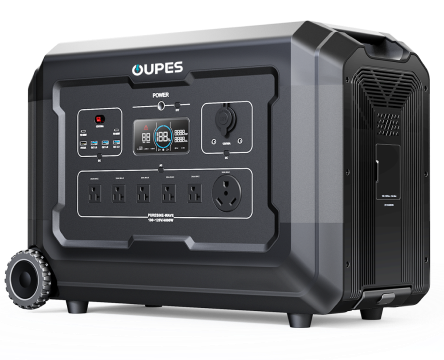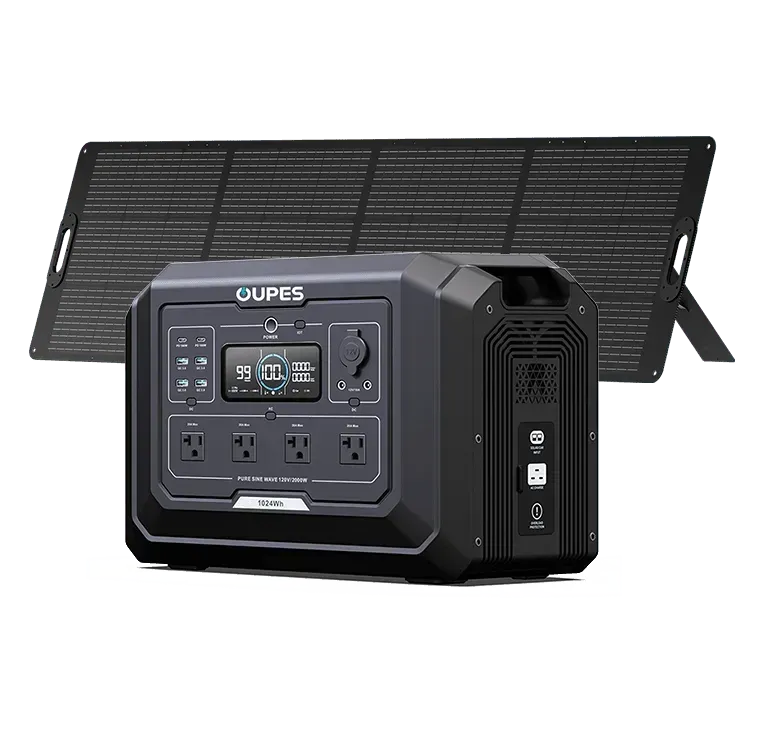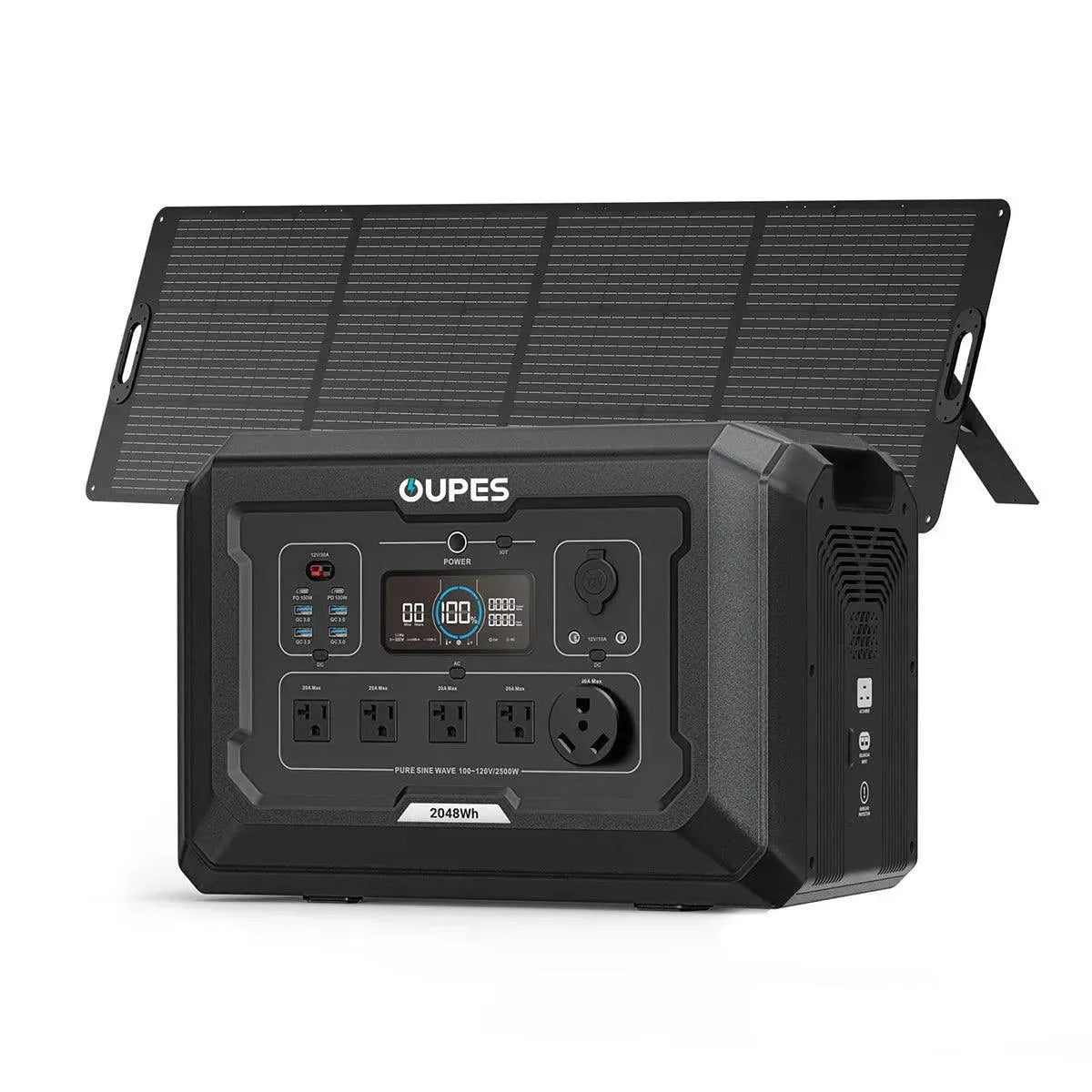
As more outdoor enthusiasts embrace sustainable technology, the market for portable solar generators has exploded with options. From powering essential devices to keeping entertainment systems running, these versatile units have become nearly as important as the tent or RV itself. But with so many choices available, how do you determine which solar generator will best serve your needs? This comprehensive guide will walk you through everything you need to know, from understanding the technology to selecting the perfect model for your camping and RV lifestyle.
Understanding Portable Solar Generators
Portable solar generators represent a significant advancement in mobile power technology. Unlike traditional gasoline generators, these devices harness clean solar energy and store it in rechargeable lithium batteries. The result is a quiet, eco-friendly power source capable of running everything from small electronics to larger appliances. At their core, solar generators consist of three primary components: solar panels, a battery pack, and an inverter. The solar panels capture sunlight and convert it into electrical energy, which is then stored in the battery pack. When you need power, the inverter converts the stored DC energy into AC power, which can be used by most household devices.
The technology behind portable solar generators has evolved dramatically in recent years. Modern units offer improved energy efficiency, longer battery life, and faster charging capabilities. Many models now feature multiple charging options, including AC outlets, USB ports, and even USB-C connections with Power Delivery support. This versatility makes them suitable for a wide range of devices, from smartphones and tablets to laptops and portable coolers. Additionally, advancements in solar panel efficiency mean that even in less-than-ideal lighting conditions, these generators can still accumulate usable energy.
One of the most significant advantages of portable solar generators is their environmental impact—or rather, their lack thereof. Traditional generators rely on fossil fuels, producing noise, emissions, and requiring regular maintenance. Solar generators, by contrast, operate silently and produce zero emissions during use. This makes them ideal for campgrounds where noise restrictions are in place or for eco-conscious travelers who want to minimize their environmental footprint. Furthermore, with no fuel required, solar generators eliminate the need to transport and store gasoline, reducing both cost and potential safety hazards.
The capacity of a solar generator is typically measured in watt-hours (Wh), which indicates how much energy it can store. For camping and RV applications, capacities range from around 100Wh for small, lightweight models up to 2000Wh or more for larger units designed to power entire RV systems. When considering capacity, it's essential to evaluate your power needs. How many devices will you be running simultaneously? What are their power requirements? For example, a small camping trip might only need enough power for lights, a fan, and charging devices, while a full-time RV dweller might require capacity for refrigeration, lighting, and entertainment systems.
Another critical specification is the solar panel's wattage and efficiency. Higher wattage panels can capture more energy in less time, but they also tend to be larger and more expensive. Most portable solar generators come with detachable solar panels, allowing users to position them optimally for sunlight exposure. Some advanced models even feature foldable panels that can be easily transported and quickly deployed. The charging time for a solar generator depends on several factors, including the panel's wattage, the battery's capacity, and weather conditions. In ideal circumstances with direct sunlight, a 100Wh generator with a 100W solar panel can recharge in approximately 10-12 hours. However, overcast conditions or suboptimal positioning can significantly extend this time.
Selecting the Right Solar Generator for Your Needs
Choosing the appropriate solar generator begins with assessing your specific requirements. The first consideration is your power consumption habits. Make a list of all the devices and appliances you plan to use during your camping or RV trips. Note their power ratings, usually expressed in watts, and estimate how many hours per day you'll use each item. For example, if you have a 60W light bulb that you use for 4 hours daily, it will consume 240Wh of energy (60W × 4h). Repeat this calculation for each device and sum the totals to determine your daily energy needs. This figure will guide you in selecting a generator with sufficient capacity.
Sizing your solar generator appropriately is crucial for both performance and value. Undersizing means you'll constantly worry about conserving power or face the frustration of devices shutting off unexpectedly. Oversizing, while providing ample power, may burden you with unnecessary weight, cost, and complexity. Striking the right balance requires honest evaluation of your usage patterns. Consider not just your typical needs but also potential contingencies. For instance, if you plan to use your generator during inclement weather when solar charging is less efficient, you might want to increase your capacity by 20-30% to compensate.
Portability is another key factor, especially for campers who need to transport their generator to remote locations. Lightweight models, often under 20 pounds, are designed for easy carrying and setup. These typically have smaller capacities, making them suitable for day trips or minimalist camping. For RV applications, where weight is less of a concern but power demands are higher, larger generators (up to 50 pounds or more) with capacities exceeding 1000Wh may be more appropriate. Many models feature built-in handles, wheels, or backpack-style straps to enhance mobility. When evaluating portability, also consider the generator's dimensions and how it will fit in your vehicle or storage area.
Budget plays a substantial role in the selection process, with prices ranging from a few hundred dollars for basic models to several thousand for high-capacity, feature-rich systems. Generally, you can expect to pay between $2-$5 per watt-hour of capacity. However, this is a rough estimate, as prices also depend on brand, technology, and included accessories. It's wise to view your solar generator as a long-term investment. While higher-priced models may seem expensive initially, their superior build quality, extended warranty, and greater efficiency can provide significant value over time. Many manufacturers offer financing options or payment plans to make premium models more accessible.
The charging ecosystem of a solar generator deserves careful attention as well. While all models charge via solar panels, the best ones offer multiple charging methods. Look for generators with AC wall charging capabilities, which allow you to recharge indoors or at campgrounds with electrical hookups. USB charging ports, especially those supporting fast-charging protocols, add convenience for powering smartphones, tablets, and cameras. Some advanced models even include vehicle charging ports or can be connected to wind turbines for diverse energy harvesting. Additionally, consider the compatibility of the included solar panels. Are they easily replaceable or upgradable? Can you connect additional panels to expand your charging capacity as your needs grow?
Top Portable Solar Generators in 2023
With numerous brands competing in the portable solar generator market, distinguishing the best models from the rest requires careful evaluation. This makes it suitable for running power tools, microwaves, and other high-wattage devices occasionally needed on camping trips or at the worksite. The Jackery's solar charging is efficient, with the included 110W solar panel providing approximately 5-6 hours of charging time under ideal conditions. Users appreciate its comprehensive port selection, including three AC outlets, multiple USB ports, and a USB-C PD port that can charge laptops at speeds comparable to wall chargers. The build quality is excellent, with a durable metal chassis that withstands outdoor conditions, and the inclusion of a convenient carrying handle makes it easy to transport despite its 28-pound weight.
For those seeking a balance between capacity and portability, the EcoFlow Delta Pro presents an impressive solution. This generator boasts an enormous 2016Wh capacity, making it capable of powering entire RV setups or supporting extended camping trips with multiple high-wattage devices. What sets the Delta Pro apart is its expandable capacity through the addition of external battery units, allowing users to customize their power storage based on needs. The charging capabilities are equally remarkable, with a 1600W solar input that can recharge the base unit in approximately 2.5 hours under optimal sunlight. The EcoFlow also excels in charging speed when using AC power, filling from 0-80% in just 30 minutes. Its output options are extensive, including 12 AC outlets, various DC ports, and USB options, accommodating virtually any device. Despite its capabilities, the Delta Pro remains relatively user-friendly, with an intuitive touchscreen display and mobile app connectivity for remote monitoring and control.
A more budget-friendly option worth considering is the Renogy Phoenix 300W. While its 288Wh capacity positions it for smaller camping trips or as a supplementary power source for RVs, it delivers excellent value for the price. The Phoenix charges efficiently through its included 100W foldable solar panel, which features durable ETFE weatherproof material and integrated kickstands for optimal positioning. This generator's AC output supports up to 300W of continuous power, sufficient for most camping essentials like lights, fans, and small appliances. Renogy has thoughtfully included multiple charging and output options, including AC, DC, and USB ports. The lightweight design (only 16 pounds) makes it exceptionally portable, and the carrying handle enhances transportability. Users frequently praise the Phoenix for its reliability and the comprehensive customer support provided by Renogy, which includes detailed setup guides and responsive technical assistance.
The Blutech Solar Generator 1000 offers another compelling option for RV enthusiasts and those requiring substantial power. With a 1022Wh capacity and the ability to deliver 1000W of continuous AC power, it can handle refrigerators, televisions, and other appliances common in RV setups. The included 200W solar panel charges the unit in approximately 5-6 hours under direct sunlight, and the generator also supports fast AC charging, reaching full capacity in about 1.5 hours from a wall outlet. What distinguishes the Blutech is its advanced Battery Management System (BMS), which prolongs battery life through features like temperature regulation and overcharge protection. The unit's design includes thoughtful details such as a built-in flashlight, level indicators for easy positioning, and a user-friendly control panel with clear status displays. At 26 pounds, it strikes a reasonable balance between capacity and portability, though the included wheels facilitate easier movement when installed in an RV.
Each of these top models excels in different aspects, making the "best" choice highly dependent on individual needs. The Jackery Explorer 1000 offers versatility and reliability for a wide range of applications, the EcoFlow Delta Pro provides unmatched expandability and power for heavy users, the Renogy Phoenix 300W delivers exceptional value for budget-conscious buyers, and the Blutech Solar Generator 1000 specializes in RV applications with its comprehensive feature set. Before making a purchase, consider requesting demonstrations or reading detailed user reviews to gain insights into real-world performance and reliability.
Maintaining and Maximizing Your Solar Generator
Proper maintenance is essential for extending the lifespan and performance of your portable solar generator. The lithium batteries at the core of these devices have finite charge cycles, typically rated for 800-2000 cycles before experiencing significant capacity degradation. To preserve battery health, avoid letting the generator discharge below 20% regularly. Most modern units include low-battery protection systems, but develop good usage habits can further extend battery life. When possible, recharge the unit after each use rather than letting it sit discharged for extended periods. Additionally, try to avoid charging or discharging in extreme temperatures. Lithium batteries perform best between 32°F and 95°F (0°C and 35°C). In colder conditions, battery efficiency decreases, and in high heat, degradation can accelerate.
Storage practices significantly impact your generator's longevity. If you won't be using it for an extended period (several months), store the unit with a 40-60% charge. This "half-charged" state reduces stress on the battery and helps prevent degradation from both overcharging and deep discharging. Choose a cool, dry storage location away from direct sunlight and temperature extremes. Garages or sheds are often suitable, but avoid storing in damp basements or hot attics. Additionally, disconnect any attached solar panels and devices during storage to prevent phantom power drain. Every 3-6 months, check the battery level and recharge it to the recommended 40-60% if it has dropped below 30%.
Maximizing the efficiency of your solar charging system requires attention to several factors. Position your solar panels to receive maximum sunlight exposure throughout the day. This typically means facing them true south in the northern hemisphere (or true north in the southern hemisphere) and angling them at approximately your current latitude. For example, in Colorado at 40°N latitude, angling panels at 40° from horizontal optimizes yearly energy capture. Keep the panels clean and free of debris, as even a small amount of dirt or snow can significantly reduce efficiency. Some users report up to 30% energy losses from soiled panels. Consider using panel mounts or racks that allow adjustable angles as the sun's position changes seasonally. For RV applications, roof-mounted panels with tilt legs can be particularly effective.
Troubleshooting common issues can prevent frustration and ensure your generator remains reliable. If your unit isn't charging via solar, first check the connections between the panel and generator. Loose or corroded connections are a frequent cause of charging failures. Inspect the solar panel for physical damage, including cracked cells or broken glass, which can impair performance. If the panel appears undamaged and connections are secure, test the generator's AC charging functionality. If AC charging works but solar doesn't, the issue likely lies with the solar components. Conversely, if neither charging method works, the problem may be with the generator's internal charging circuitry, warranting contact with customer support. Similarly, if the generator powers some devices but not others, check the device's power requirements against the generator's output capabilities. Some devices with power surges (like refrigerators or motors) may require a generator with higher surge capacity than their listed continuous wattage suggests.
Integrating your solar generator with other power systems can create a comprehensive energy solution for extended trips. Many RV owners combine their solar generator with the vehicle's built-in battery system, using a smart charger to manage energy flow between the two. This setup allows the RV battery to handle engine-starting duties while the solar generator powers living space electronics, extending overall system life and capacity. For campers with access to campground electricity, using the generator's AC charging port during off-peak hours (when campground rates are lower) can be cost-effective and preserve solar charging for daytime use. Additionally, pairing your solar generator with a small wind turbine can provide supplemental charging during cloudy periods, though this is more common in marine or stationary off-grid applications than with traditional camping and RV use.
In the evolving landscape of outdoor power solutions, portable solar generators stand out as versatile, eco-friendly alternatives to traditional fuel-powered generators. By understanding their technology, carefully selecting a model that matches your needs, and maintaining them properly, you can ensure reliable power for all your camping and RV adventures. As solar technology continues to advance, we can expect even more efficient, powerful, and affordable options to emerge, further enhancing the freedom and comfort of life beyond the grid.
Whether you're a weekend warrior escaping to the mountains or a full-time RV nomad exploring the country, investing in a quality portable solar generator represents a commitment to sustainability and convenience. The right unit will disappear into the background of your adventures, providing dependable power without the hassles of fuel, noise, or emissions. As you research and potentially purchase a solar generator, remember that your investment isn't just in a device—it's in the peace of mind that comes with knowing your essential electronics, comfort devices, and safety equipment will function reliably, rain or shine, in the most remote corners of the wilderness or the coziest campgrounds.




























